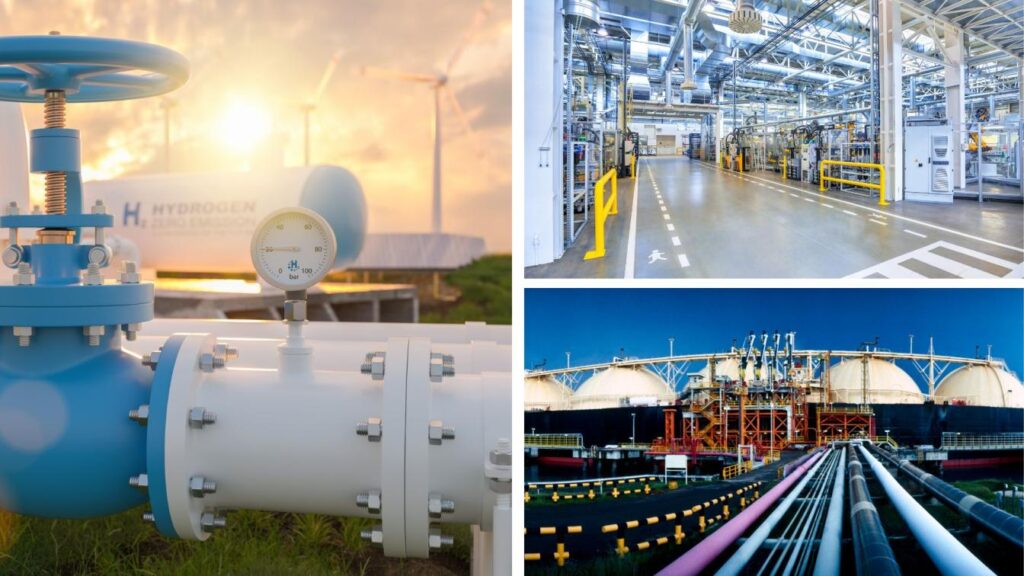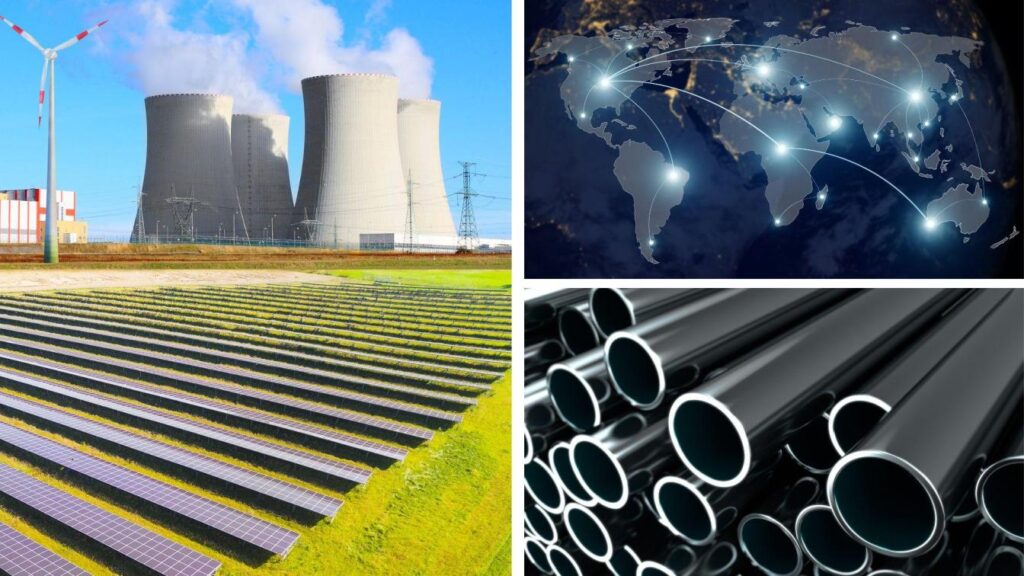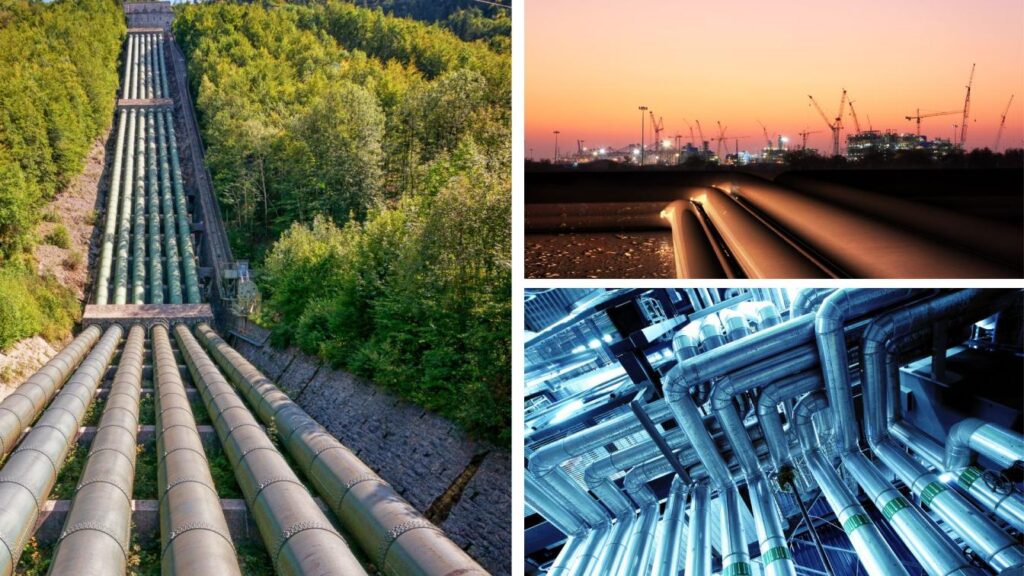Pipe Relining: The Innovative Solution for Mitigating Risks in Oil and Gas Pipeline Infrastructure
The oil and gas industry relies on a vast network of pipelines to transport critical resources across long distances, often through challenging terrains and harsh environments. As these pipelines age and deteriorate, the risks of leaks, ruptures, and failures increase significantly, posing serious threats to public safety, environmental integrity, and operational continuity. Traditional pipeline repair methods, such as excavation and replacement, are not only costly and time-consuming but also disruptive to surrounding communities and ecosystems.
Enter pipe relining, a revolutionary technology that offers a smarter, safer, and more sustainable approach to pipeline rehabilitation. By creating a new pipe within the existing one, pipe relining effectively restores the structural integrity and performance of aging pipelines without the need for extensive digging or disruption. This innovative solution has emerged as a game-changer in the oil and gas industry, enabling companies to mitigate risks, extend asset life, and ensure the reliable delivery of energy resources.

At the forefront of this transformative technology is Nexa Pipe, a leading provider of advanced pipe relining solutions. With a deep understanding of the unique challenges faced by the oil and gas industry, Nexa Pipe has developed a range of proprietary technologies and methods that set new standards in pipeline rehabilitation. From high-performance materials to precision installation techniques, Nexa Pipe’s solutions are engineered to deliver superior results in even the most demanding conditions.
“Pipe relining is not just about fixing pipes; it’s about ensuring the safe, efficient, and sustainable operation of our critical energy infrastructure. At Nexa Pipe, we are committed to helping the oil and gas industry navigate the challenges of aging pipelines and embrace a smarter, greener future.”
– Nexa Pipe
Understanding the Risks in Pipeline Infrastructure
The oil and gas industry’s pipeline infrastructure is exposed to a wide range of risks that can compromise its integrity and performance. These risks include:
- Corrosion and erosion
- External damage from third-party activities
- Stress and fatigue from fluctuating pressures and temperatures
- Ground movement and seismic activity
- Material defects and manufacturing flaws
As pipelines age, these risks become more pronounced, leading to an increased likelihood of failures and incidents. In fact, according to the Pipeline and Hazardous Materials Safety Administration (PHMSA), aging pipelines account for a significant portion of the industry’s safety incidents, with corrosion being the leading cause of pipeline failures.
| Cause of Failure | Percentage of Incidents |
|---|---|
| Corrosion | 35% |
| Equipment Failure | 25% |
| Third-Party Damage | 20% |
| Other Causes | 20% |
The consequences of pipeline failures can be catastrophic, ranging from oil spills and gas leaks to explosions and fires. These incidents not only pose serious risks to public health and safety but also result in significant environmental damage, financial losses, and reputational harm for the companies involved. In an era of heightened public scrutiny and regulatory oversight, the oil and gas industry must prioritize pipeline integrity management and embrace innovative solutions like pipe relining to mitigate these risks effectively.
The Advantages of Pipe Relining in Risk Mitigation
Pipe relining offers a range of compelling advantages over traditional pipeline repair methods, making it an ideal solution for mitigating risks in the oil and gas industry:
- Minimally Invasive: Pipe relining eliminates the need for extensive excavation, reducing the environmental impact and minimizing disruption to surrounding communities.
- Cost-Effective: By avoiding the costs associated with excavation, replacement, and site restoration, pipe relining offers significant cost savings compared to traditional repair methods.
- Time-Efficient: Pipe relining projects can be completed in a fraction of the time required for traditional repairs, minimizing downtime and ensuring faster return to service.
- Versatile: Pipe relining can be applied to a wide range of pipeline materials, diameters, and configurations, making it a versatile solution for various rehabilitation needs.
- Long-Lasting: With proper installation and maintenance, relined pipes can have a service life of 50 years or more, providing a long-term solution for pipeline integrity management.
By leveraging these advantages, oil and gas companies can proactively address the risks associated with aging pipelines, ensure regulatory compliance, and demonstrate their commitment to responsible operations. Pipe relining not only helps to prevent incidents and failures but also extends the life of critical infrastructure assets, enabling the industry to meet the growing demand for energy while minimizing its environmental footprint.
Nexa Pipe: Leading the Way in Pipe Relining Innovation
As a pioneer in pipe relining technology, Nexa Pipe is at the forefront of helping the oil and gas industry mitigate pipeline risks and embrace a more sustainable future. With a team of highly skilled engineers, technicians, and project managers, Nexa Pipe delivers end-to-end solutions that are tailored to the unique needs of each client and project.
Nexa Pipe’s proprietary technologies and methods are designed to overcome the limitations of traditional pipe relining systems, offering superior performance, reliability, and efficiency. From advanced materials that provide exceptional strength and durability to state-of-the-art installation equipment that ensures precision and quality, Nexa Pipe’s solutions represent the cutting edge of pipe relining innovation.

In addition to its technical expertise, Nexa Pipe is committed to providing exceptional customer service and support. The company’s team works closely with clients to understand their unique challenges, develop customized solutions, and ensure seamless project execution. With a track record of successful projects across the globe, Nexa Pipe has earned a reputation as a trusted partner for oil and gas companies seeking to optimize their pipeline integrity management programs.
As the oil and gas industry continues to evolve and face new challenges, pipe relining will play an increasingly critical role in mitigating risks, enhancing safety, and driving sustainable operations. With innovative solutions like those offered by Nexa Pipe, the industry can confidently navigate the complexities of pipeline rehabilitation and ensure the reliable delivery of energy resources for generations to come.
Pipe Relining: The Innovative Solution for Aging Pipeline Infrastructure
In today’s rapidly evolving world, the oil and gas industry faces a critical challenge: maintaining the integrity and efficiency of its vast network of pipelines. As these vital arteries of the industry age and deteriorate, the risks of leaks, ruptures, and failures increase significantly, threatening public safety, environmental well-being, and operational continuity. Traditional pipeline repair methods, such as excavation and replacement, are not only costly and time-consuming but also disruptive to surrounding communities and ecosystems.
Enter pipe relining, a revolutionary technology that offers a smarter, safer, and more sustainable approach to pipeline rehabilitation. By creating a new pipe within the existing one, pipe relining effectively restores the structural integrity and performance of aging pipelines without the need for extensive digging or disruption. This innovative solution has emerged as a game-changer in the oil and gas industry, enabling companies to mitigate risks, extend asset life, and ensure the reliable delivery of energy resources.

At the forefront of this transformative technology is Nexa Pipe, a leading provider of advanced pipe relining solutions. With a deep understanding of the unique challenges faced by the oil and gas industry, Nexa Pipe has developed a range of proprietary technologies and methods that set new standards in pipeline rehabilitation. From high-performance materials to precision installation techniques, Nexa Pipe’s solutions are engineered to deliver superior results in even the most demanding conditions.
“Pipe relining is not just about fixing pipes; it’s about ensuring the safe, efficient, and sustainable operation of our critical energy infrastructure. At Nexa Pipe, we are committed to helping the oil and gas industry navigate the challenges of aging pipelines and embrace a smarter, greener future.”
Nexa Pipe
The importance of pipe relining in the oil and gas industry cannot be overstated. With a significant portion of the world’s pipelines approaching or exceeding their design life, the need for effective and efficient rehabilitation solutions has never been greater. Pipe relining not only addresses the immediate risks associated with aging infrastructure but also offers a proactive approach to pipeline integrity management, helping companies optimize their assets and minimize future repair and replacement costs.
Moreover, pipe relining aligns with the industry’s growing focus on sustainability and environmental stewardship. By minimizing the need for excavation and reducing the carbon footprint associated with traditional repair methods, pipe relining contributes to a greener and more responsible future for the oil and gas sector. As the world transitions towards cleaner energy sources, the ability to extend the life of existing pipelines through innovative technologies like pipe relining will be crucial in ensuring a smooth and sustainable transition.
| Aspect | Traditional Repair | Pipe Relining |
|---|---|---|
| Excavation | Extensive | Minimal |
| Disruption | High | Low |
| Cost | High | Moderate |
| Environmental Impact | Significant | Minimal |
The benefits of pipe relining extend beyond the oil and gas industry. As the technology continues to evolve and mature, its applications are expanding to other sectors, such as water and wastewater management, industrial facilities, and even residential properties. The versatility and adaptability of pipe relining make it a valuable tool for addressing a wide range of pipeline challenges across different industries and settings.
In the following sections, we will delve deeper into the world of pipe relining, exploring its technical aspects, applications, and benefits in the context of the oil and gas industry. We will examine how companies like Nexa Pipe are pushing the boundaries of innovation to deliver cutting-edge solutions that address the most pressing challenges faced by pipeline operators. By understanding the transformative potential of pipe relining, we can appreciate its role in shaping a safer, more efficient, and sustainable future for the oil and gas industry and beyond.

The Risks in Pipeline Infrastructure: Understanding the Challenges
The oil and gas industry’s pipeline infrastructure is a complex and intricate network that spans vast distances, often traversing challenging terrains and harsh environments. While these pipelines are designed and constructed to withstand the test of time, they are not immune to the various risks and challenges that can compromise their integrity and performance. Understanding these risks is crucial for pipeline operators to develop effective strategies for mitigation and prevention.
One of the most significant risks faced by pipelines is corrosion. Over time, exposure to moisture, chemicals, and other corrosive agents can cause pipelines to deteriorate, leading to leaks, ruptures, and failures. Corrosion can occur both internally and externally, and it can be accelerated by factors such as high temperatures, acidic environments, and the presence of microorganisms. According to a study by NACE International, the global cost of corrosion is estimated to be $2.5 trillion annually, with the oil and gas industry accounting for a significant portion of this cost.

Another major risk to pipeline infrastructure is third-party damage. This can occur when external activities, such as construction, excavation, or farming, inadvertently damage pipelines. Third-party damage is a leading cause of pipeline incidents, and it can result in serious consequences, including oil spills, gas leaks, and explosions. To mitigate this risk, pipeline operators must work closely with local communities, landowners, and contractors to ensure that pipelines are properly marked and protected.
Pipelines are also susceptible to stress and fatigue caused by fluctuating pressures and temperatures. As pipelines transport fluids at high pressures and temperatures, they experience constant stress and strain, which can lead to the formation of cracks and other structural defects over time. These defects can grow and propagate, eventually leading to pipeline failures if not detected and addressed promptly. Regular monitoring and inspection of pipelines using advanced technologies, such as inline inspection tools and acoustic emission sensors, can help identify and assess stress and fatigue-related risks.
| Risk Factor | Potential Consequences |
|---|---|
| Corrosion | Leaks, ruptures, and failures |
| Third-Party Damage | Oil spills, gas leaks, and explosions |
| Stress and Fatigue | Cracks and structural defects |
| Natural Hazards | Physical damage and disruptions |
In addition to these risks, pipelines are also vulnerable to natural hazards, such as earthquakes, landslides, and extreme weather events. These hazards can cause physical damage to pipelines, leading to leaks and disruptions in the flow of oil and gas. Pipeline operators must consider the potential impact of natural hazards when designing and constructing pipelines, as well as when developing emergency response and contingency plans.
“Pipeline integrity management is not just about fixing problems when they occur; it’s about proactively identifying and mitigating risks before they can cause harm. By embracing innovative technologies and best practices, we can ensure the safe and reliable operation of our pipeline infrastructure.”
– Nexa Pipe, Pipeline Integrity Manager
To effectively manage these risks, pipeline operators must adopt a comprehensive and proactive approach to pipeline integrity management. This involves regular monitoring and inspection of pipelines, the use of advanced technologies for data collection and analysis, and the implementation of preventive maintenance and repair strategies. By staying ahead of potential risks and addressing them promptly, pipeline operators can minimize the likelihood of incidents and ensure the safe and efficient transportation of oil and gas.
One of the most promising solutions for mitigating pipeline risks is pipe relining. This innovative technology involves creating a new pipe within the existing one, effectively restoring the structural integrity and performance of aging pipelines without the need for extensive excavation or replacement. Pipe relining offers a cost-effective, efficient, and minimally disruptive alternative to traditional pipeline repair methods, making it an attractive option for pipeline operators looking to extend the life of their assets and reduce the risk of failures.

As the oil and gas industry continues to evolve and face new challenges, the importance of effective pipeline risk management cannot be overstated. By understanding the various risks that can impact pipeline integrity and performance, and by embracing innovative solutions like pipe relining, pipeline operators can ensure the safe, reliable, and sustainable transportation of energy resources for years to come. In the next section, we will explore the technology behind pipe relining and how it works to mitigate pipeline risks.
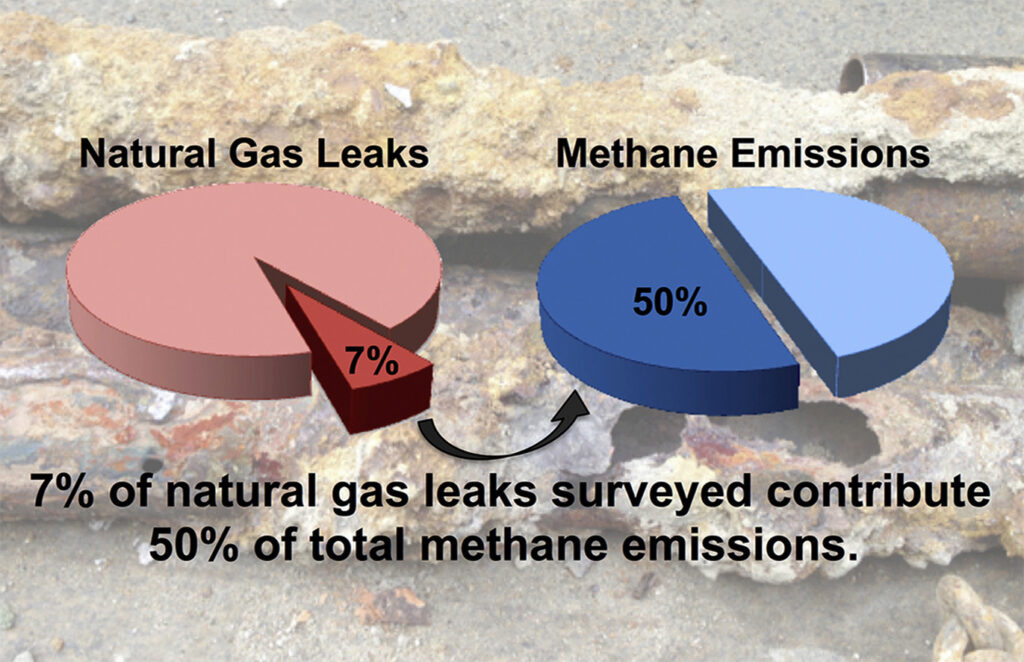
Understanding Pipe Relining Technology
Pipe relining, also known as cured-in-place pipe (CIPP) technology, has revolutionized the way we approach pipeline rehabilitation. This innovative method involves inserting a flexible liner into the damaged pipe and then curing it in place, creating a seamless, durable, and long-lasting solution. Let’s take a closer look at the technology behind pipe relining and how it works.
The Pipe Relining Process
The pipe relining process typically involves the following steps:
- Inspection: A thorough inspection of the damaged pipe is conducted using advanced camera technology to assess the extent of the damage and determine the feasibility of relining.
- Cleaning: The pipe is cleaned using high-pressure water jetting or mechanical cleaning methods to remove any debris, corrosion, or buildup.
- Liner Preparation: A flexible liner, typically made of polyester or fiberglass, is impregnated with a special epoxy resin.
- Liner Insertion: The liner is inserted into the damaged pipe using either the inversion method or the pull-in-place method.
- Curing: The liner is cured in place using heat, steam, or ultraviolet light, causing the resin to harden and form a tight-fitting, structural pipe within the existing pipe.
- Final Inspection: A final camera inspection is performed to ensure the proper installation and integrity of the newly relined pipe.
Advantages of Pipe Relining Technology
Pipe relining offers numerous advantages over traditional pipe replacement methods:
- Minimally invasive, requiring little to no excavation
- Cost-effective, saving up to 50% compared to traditional pipe replacement
- Time-efficient, with most projects completed in a single day
- Versatile, suitable for various pipe materials and diameters
- Long-lasting, with a lifespan of up to 50 years or more
- Environmentally friendly, reducing waste and minimizing disruption to surrounding areas
| Aspect | Traditional Pipe Replacement | Pipe Relining |
|---|---|---|
| Excavation | Extensive | Minimal to none |
| Cost | High | Up to 50% less |
| Time | Several days to weeks | Typically one day |
| Lifespan | 50+ years | 50+ years |
Pipe relining technology has proven to be a game-changer in the world of pipeline rehabilitation, offering a cost-effective, efficient, and long-lasting solution for both residential and commercial properties. By understanding the technology behind pipe relining and its numerous benefits, property owners can make informed decisions when faced with the need for pipe repairs or replacement.
The Sustainability of Pipe Relining
In an era where environmental sustainability is of utmost importance, pipe relining emerges as a green solution for pipeline rehabilitation. By minimizing excavation, reducing waste, and conserving resources, pipe relining contributes to a more sustainable future for the oil and gas industry and beyond.
Environmental Benefits of Pipe Relining
Pipe relining offers several key environmental benefits:
- Reduced Carbon Footprint: By eliminating the need for extensive excavation and heavy machinery, pipe relining significantly reduces the carbon footprint associated with pipeline repairs.
- Minimal Waste Generation: Pipe relining generates far less waste compared to traditional pipe replacement methods, as the existing pipe remains in place and is rehabilitated from within.
- Resource Conservation: By extending the lifespan of existing pipelines, pipe relining conserves resources that would otherwise be required for manufacturing and installing new pipes.
- Ecosystem Preservation: Pipe relining minimizes the disturbance to surrounding ecosystems, as it requires little to no excavation, preserving the natural habitat and biodiversity.
Nexa Pipe’s Commitment to Sustainability
At Nexa Pipe, sustainability is at the core of our operations. We are dedicated to providing pipe relining solutions that not only address the immediate needs of our clients but also contribute to a greener future. Our commitment to sustainability is evident in our:
- Use of eco-friendly materials and processes
- Continuous research and development to improve the environmental performance of our solutions
- Collaboration with industry partners to promote sustainable practices
- Education and awareness initiatives to highlight the environmental benefits of pipe relining
By choosing Nexa Pipe for your pipe relining needs, you are not only investing in the longevity and performance of your pipeline infrastructure but also contributing to a more sustainable future for generations to come.
| Environmental Aspect | Impact of Pipe Relining |
|---|---|
| Carbon Footprint | Significantly reduced |
| Waste Generation | Minimal |
| Resource Conservation | Maximized |
| Ecosystem Preservation | Enhanced |
As the oil and gas industry continues to evolve and face new challenges, the adoption of sustainable practices like pipe relining will play a crucial role in ensuring a responsible and resilient future. By embracing innovative technologies and prioritizing environmental stewardship, we can work together to build a more sustainable world for all.
Cost-Benefit Analysis of Pipe Relining
When considering pipeline rehabilitation options, it is essential to evaluate the cost-benefit analysis of each approach. Pipe relining, with its minimally invasive nature and long-term performance, offers a compelling financial case for oil and gas companies looking to optimize their pipeline integrity management programs.
Cost Savings of Pipe Relining
Compared to traditional pipeline repair and replacement methods, pipe relining offers significant cost savings, including:
- Reduced excavation and site restoration costs
- Minimized downtime and lost production costs
- Lower labor and equipment costs
- Eliminated costs associated with the disposal of old pipelines
In many cases, pipe relining can save oil and gas companies up to 50% compared to traditional pipeline replacement methods. These cost savings can be particularly significant for pipelines in challenging environments, such as subsea or remote locations, where access and logistics can be costly and complex.
Long-Term Financial Benefits
In addition to the immediate cost savings, pipe relining offers long-term financial benefits for oil and gas companies, including:
- Extended Asset Lifespan: Pipe relining can extend the lifespan of a pipeline by 50 years or more, reducing the frequency and cost of future repairs and replacements.
- Improved Operational Efficiency: By rehabilitating aging pipelines, pipe relining can improve flow rates, reduce pressure drops, and enhance overall operational efficiency, leading to increased production and revenue.
- Reduced Environmental Liabilities: Pipe relining minimizes the risk of pipeline failures and leaks, reducing the potential for costly environmental liabilities and reputational damage.
- Enhanced Regulatory Compliance: By proactively addressing pipeline integrity issues, pipe relining can help oil and gas companies maintain compliance with increasingly stringent regulations, avoiding costly fines and penalties.
| Cost Factor | Traditional Replacement | Pipe Relining |
|---|---|---|
| Excavation and Site Restoration | High | Minimal |
| Downtime and Lost Production | Significant | Minimal |
| Labor and Equipment | High | Moderate |
| Disposal of Old Pipelines | Significant | None |
By partnering with Nexa Pipe for their pipe relining needs, oil and gas companies can realize significant cost savings and long-term financial benefits, while ensuring the safe, efficient, and sustainable operation of their pipeline infrastructure. Our team of experts works closely with clients to develop customized solutions that optimize the cost-benefit balance for each unique project, delivering maximum value and return on investment.
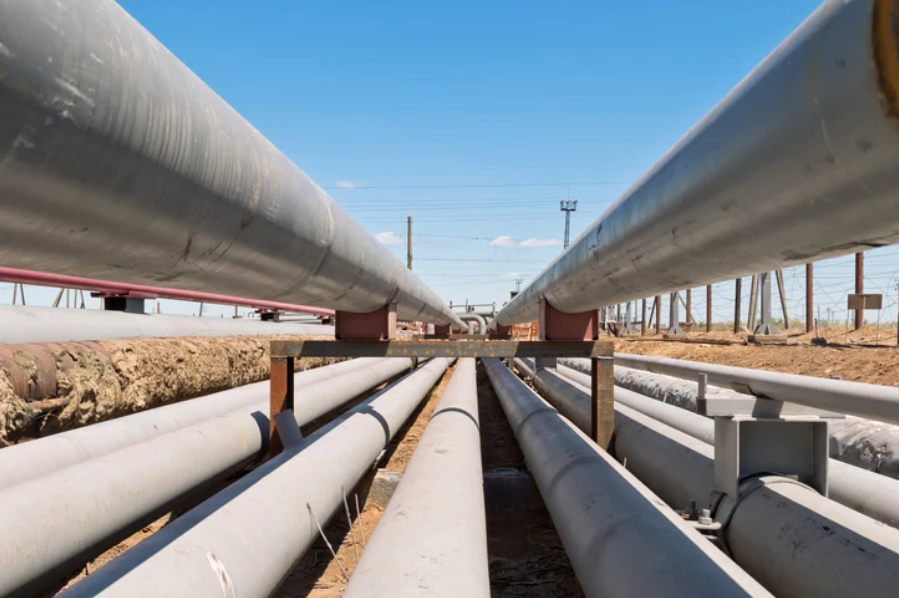
The Installation Process of Nexa Pipe Relining
At Nexa Pipe, we have perfected the installation process of our pipe relining solutions to ensure a seamless, efficient, and long-lasting result. Our team of highly trained technicians follows a rigorous step-by-step approach to ensure the highest quality standards are met at every stage of the process.
Step 1: Inspection and Assessment
The first step in our installation process is a thorough inspection and assessment of the damaged pipeline. Using state-of-the-art camera technology, we conduct a comprehensive survey of the pipe’s interior to identify the extent and location of any damage, cracks, or corrosion. This initial assessment allows us to determine the most appropriate relining solution for your specific needs.
Step 2: Cleaning and Preparation
Once the inspection is complete, our team proceeds with cleaning and preparing the pipeline for relining. This step is crucial to ensure a strong, lasting bond between the existing pipe and the new liner. We employ advanced cleaning techniques, such as high-pressure water jetting and mechanical cleaning, to remove any debris, scale, or buildup from the pipe’s interior surface.
Step 3: Liner Impregnation and Insertion
With the pipeline cleaned and prepped, we begin the liner impregnation process. Our custom-made liner is saturated with a specially formulated epoxy resin, which is carefully selected based on the specific requirements of your project. The saturated liner is then inserted into the damaged pipe using either the inversion method or the pull-in-place technique, depending on the pipe’s configuration and access points.
Step 4: Curing and Hardening
Once the liner is in place, we initiate the curing process, which hardens the epoxy resin and creates a seamless, durable new pipe within the existing structure. We employ a combination of heat, pressure, and time to ensure a complete and uniform cure throughout the entire length of the liner. Our advanced curing technologies allow us to achieve optimal results in a fraction of the time required by traditional methods.
Step 5: Final Inspection and Quality Assurance
After the curing process is complete, we conduct a final inspection of the relined pipe to verify its structural integrity and ensure a flawless finish. Our quality assurance protocols include:
- Visual inspection of the liner’s interior surface
- Pressure testing to confirm the liner’s strength and leak-free performance
- CCTV survey to document the final result and provide a comprehensive record of the installation
| Installation Step | Purpose | Nexa Pipe Advantage |
|---|---|---|
| Inspection and Assessment | Identify damage and select appropriate solution | Advanced camera technology for accurate assessment |
| Cleaning and Preparation | Ensure strong bond between liner and existing pipe | High-pressure water jetting and mechanical cleaning |
| Liner Impregnation and Insertion | Saturate liner with epoxy resin and insert into pipe | Custom-made liners and specialized insertion techniques |
| Curing and Hardening | Create a seamless, durable new pipe within the existing structure | Advanced curing technologies for optimal results in less time |
| Final Inspection and Quality Assurance | Verify structural integrity and flawless finish | Comprehensive quality assurance protocols |
At Nexa Pipe, we take pride in our meticulous installation process, which ensures that every pipe relining project we undertake meets the highest standards of quality, durability, and performance. Our commitment to excellence, combined with our cutting-edge technologies and expert technicians, sets us apart as the leading provider of pipe relining solutions for the oil and gas industry.
Regulatory Compliance and Pipe Relining
In the oil and gas industry, regulatory compliance is of utmost importance to ensure the safe, efficient, and environmentally responsible operation of pipeline infrastructure. At Nexa Pipe, we understand the critical role that pipe relining plays in meeting these regulatory requirements and maintaining the integrity of your pipeline assets.
Industry Regulations and Standards
The oil and gas industry is subject to a wide range of regulations and standards, which govern the design, construction, operation, and maintenance of pipeline systems. These include:
- Pipeline and Hazardous Materials Safety Administration (PHMSA) regulations
- American Petroleum Institute (API) standards
- National Association of Corrosion Engineers (NACE) standards
- International Organization for Standardization (ISO) standards
Nexa Pipe’s relining solutions are engineered to meet or exceed these stringent regulatory requirements, ensuring that your pipeline assets remain compliant and safe throughout their operational life.
Pipe Relining and Regulatory Compliance
Pipe relining plays a crucial role in maintaining regulatory compliance by addressing key areas of concern, such as:
- Structural Integrity: By restoring the structural integrity of damaged or deteriorated pipelines, pipe relining helps to prevent leaks, ruptures, and failures, which can lead to safety incidents and environmental hazards.
- Corrosion Control: Pipe relining provides a new, seamless inner surface that is highly resistant to corrosion, helping to extend the life of your pipeline assets and maintain compliance with corrosion control regulations.
- Leak Detection and Prevention: The smooth, uniform surface of a relined pipe enhances the effectiveness of leak detection systems, allowing for early identification and remediation of potential leaks, in accordance with regulatory requirements.
- Environmental Protection: By minimizing the risk of leaks and spills, pipe relining helps to protect the environment and comply with environmental regulations, such as the Clean Water Act and the Oil Pollution Act.
| Regulatory Area | Pipe Relining Benefit |
|---|---|
| Structural Integrity | Prevents leaks, ruptures, and failures |
| Corrosion Control | Provides a corrosion-resistant inner surface |
| Leak Detection and Prevention | Enhances leak detection system effectiveness |
| Environmental Protection | Minimizes the risk of leaks and spills |
At Nexa Pipe, regulatory compliance is at the forefront of everything we do. Our pipe relining solutions are designed to help you meet the most stringent industry regulations and standards, ensuring the safe, reliable, and environmentally responsible operation of your pipeline infrastructure. By partnering with Nexa Pipe, you can have confidence that your pipeline assets will remain compliant and perform optimally for years to come.

Innovations in Pipe Relining by Nexa Pipe
At Nexa Pipe, we are committed to pushing the boundaries of pipe relining technology to deliver the most advanced, efficient, and sustainable solutions for our clients in the oil and gas industry. Our team of expert engineers and technicians is constantly researching and developing new innovations to address the evolving challenges of pipeline integrity management.
Advanced Materials and Coatings
One area of focus for our research and development efforts is the advancement of materials and coatings used in pipe relining. We are exploring the use of cutting-edge materials, such as:
- High-performance epoxy resins with enhanced mechanical and chemical properties
- Nano-engineered coatings that provide superior corrosion resistance and durability
- Self-healing materials that can automatically repair minor damage and extend the life of the liner
- Thermoplastic liners with exceptional flexibility and resistance to cracking and fatigue
By incorporating these advanced materials into our pipe relining solutions, we aim to deliver even greater performance, longevity, and reliability for our clients’ pipeline assets.
Robotics and Automation
Another area of innovation at Nexa Pipe is the integration of robotics and automation into our pipe relining processes. We are developing smart robotic systems that can:
- Perform detailed inspections of pipeline interiors using advanced sensor technologies
- Clean and prepare pipelines for relining with high precision and efficiency
- Install liners in hard-to-reach or hazardous locations, reducing the need for human intervention
- Monitor the curing process in real-time, ensuring optimal results and minimizing downtime
By leveraging the power of robotics and automation, we can streamline our pipe relining operations, improve safety for our technicians, and deliver even more consistent and reliable results for our clients.
| Innovation Area | Key Benefits |
|---|---|
| Advanced Materials and Coatings | Enhanced performance, longevity, and reliability |
| Robotics and Automation | Improved efficiency, safety, and consistency |
| Digital Technologies and Data Analytics | Predictive maintenance, optimized decision-making, and enhanced performance monitoring |
Digital Technologies and Data Analytics
At Nexa Pipe, we recognize the transformative potential of digital technologies and data analytics in the field of pipe relining. We are integrating smart sensors, Internet of Things (IoT) devices, and advanced data analytics platforms into our solutions to enable:
- Real-time monitoring of pipeline conditions and performance
- Predictive maintenance and early detection of potential issues
- Optimization of relining processes based on data-driven insights
- Enhanced collaboration and knowledge sharing among our teams and clients
By harnessing the power of digital technologies and data analytics, we can provide our clients with unparalleled visibility into the health and performance of their pipeline assets, enabling proactive decision-making and optimized asset management strategies.
At Nexa Pipe, innovation is not just a buzzword – it is a core value that drives everything we do. By continually pushing the boundaries of pipe relining technology, we are helping our clients in the oil and gas industry to achieve new levels of safety, efficiency, and sustainability in their pipeline operations.
Why Choose Nexa Pipe for Your Relining Needs
When it comes to pipe relining solutions for the oil and gas industry, Nexa Pipe stands out as the clear choice for companies seeking the highest levels of quality, expertise, and innovation. Here are just a few of the reasons why our clients trust us with their most critical pipeline assets:
Unmatched Expertise and Experience
At Nexa Pipe, we have assembled a team of the world’s leading experts in pipe relining technology, with decades of combined experience in the oil and gas industry. Our engineers, technicians, and project managers have a deep understanding of the unique challenges and requirements of pipeline integrity management, and they bring this expertise to bear on every project we undertake.
Cutting-Edge Technologies and Solutions
We are committed to staying at the forefront of pipe relining innovation, continually investing in research and development to bring the most advanced technologies and solutions to our clients. From state-of-the-art materials and coatings to robotics and automation, we are always pushing the boundaries of what is possible in pipe relining.
Customized Approach to Every Project
At Nexa Pipe, we understand that every pipeline is unique, with its own set of challenges and requirements. That’s why we take a highly customized approach to every project, working closely with our clients to understand their specific needs and develop tailored solutions that deliver optimal results.
Uncompromising Quality and Safety
Quality and safety are the top priorities in everything we do at Nexa Pipe. We adhere to the most stringent industry standards and regulations, and we have implemented rigorous quality control and safety protocols throughout our operations. Our commitment to excellence ensures that every pipe relining project we complete meets the highest standards of performance and reliability.
| Nexa Pipe Advantage | Benefit to Clients |
|---|---|
| Unmatched Expertise and Experience | Proven track record of success in the oil and gas industry |
| Cutting-Edge Technologies and Solutions | Access to the most advanced and innovative pipe relining solutions |
| Customized Approach to Every Project | Solutions tailored to the unique needs and requirements of each client |
| Uncompromising Quality and Safety | Peace of mind knowing that their pipeline assets are in the best hands |
When you choose Nexa Pipe for your pipe relining needs, you are not just getting a vendor – you are getting a true partner who is committed to your success. We are dedicated to helping our clients achieve their pipeline integrity management goals, and we go above and beyond to deliver the best possible results on every project.
So why wait? Contact Nexa Pipe today to learn more about how our cutting-edge pipe relining solutions can help you optimize the performance, safety, and sustainability of your pipeline assets. Our team of experts is ready to work with you to develop a customized solution that meets your unique needs and exceeds your expectations.
“At Nexa Pipe, we are more than just a pipe relining company – we are a partner in your success. We are committed to delivering the most advanced, reliable, and sustainable solutions to help you achieve your pipeline integrity management goals. Contact us today to learn more about how we can help you optimize the performance and safety of your critical pipeline assets.”
– Business Development, Nexa Pipe
